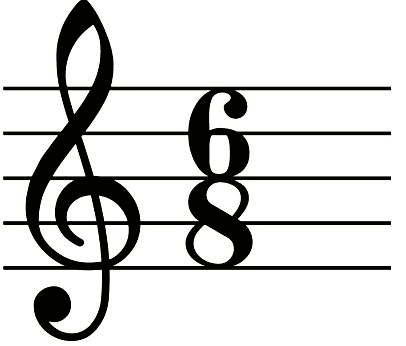In our latest Passing Notes article, dance music theory expert Oliver Curry explains why it’s OK for producers to break away from the conventional 4/4 time signature now and again.
The overwhelming majority of dance music is written in 4/4 time; a very large proportion also sticks rigidly to a four-to-the-floor kick drum pattern. Those conventions are informed by decades of western musical traditions and the stylistic tropes of countless 20th-century popular music genres – from blues to rock’n’roll, disco to soul. The net result is that writing music in 4/4 is a default choice for virtually all contemporary dance music genres.
Breaking away to an ‘alternative’ time signature – anything other than 4/4 – might seem like a risky choice. There are, of course, a number of very good reasons why 4/4 is still the ‘safest’ time signature for anyone writing club music. Firstly, dancers in most club environments are likely to respond favourably to familiar 4/4 grooves. However, don’t underestimate listeners’ receptiveness to different grooves. It’s much easier to nod your head to a non-4/4 beat than it is to sit and analyse it. Dancers probably aren’t counting the notes; if the groove’s good, they’ll dance to it whether it’s 4/4, 7/8 or pretty much anything else.
Secondly, and perhaps more importantly, DJs are far more likely to play tracks that mix easily with other music. If your tracks are in 5/4, it’s going to take a lot of effort to work them into a set – there’s a good chance most DJs will just leave your records out of their box rather than jumping through hoops to try and fit them into a mix. But while DJ friendliness is obviously important, it shouldn’t necessarily be the overriding factor when making creative decisions. Dance music would soon become highly derivative if all producers stuck rigidly to a series of club-focused conventions and de facto rules.
In this instalment of Passing Notes, we’ll take a closer look at a number of tracks which use alternative time signatures. We can only scratch the surface of the infinite possibilities in terms of time signatures, but by examining a handful of the most common options we can explain how and why breaking away from 4/4 can be a highly rewarding creative challenge.
What are time signatures?
In conventional notation, time signatures are represented using two numbers, one on top of the other:
The image above shows a 6/8 time signature. The top number tells us that there are six beats in the bar. The bottom number tells us that these beats are eighth notes (or ‘quavers’). Hence, there are six quavers to a bar.
A question that immediately arises when looking at this signature, is how is that different from a 3/4 signature. Surely, six eighth notes is the same as three quarter notes? However, while it is true that a bar of each of the two signatures at the same tempo will last the same length of time, the two time signatures are different. 6/8 differs 3/4 due to the accent or emphasis of the beat.
In a 6/8 signature, the natural accent is on the first and fourth quavers:
1-2-3-4-5-6
whereas if we played quavers in a 3/4 signature, the emphasis would occur on the first, third and fifth:
1-2-3-4-5-6
Some people find it easier to count those 3/4 quavers in a slightly different way:
1-and-2-and-3-and
We can see and hear the difference in the example below. The first two bars are in a 3/4 time signature, while the second two are in 6/8:
Note how the placement of the snare drums and the emphasis of the hi-hats creates a small but noticeable shift in feel from one time signature to the other.
Other times signatures are defined in similar ways. To get a feel for counting the beat, a classic example is The Dave Brubeck Quartet’s 1959 track ‘Take Five’, which takes its name from its 5/4 time signature.
By counting along “1-2-3-4-5-1-2-3-4-5…”, you should be able to follow the time signature of the track. If you have trouble catching the timing, focus on Brubeck’s piano vamp, which is one bar long and repeats throughout most of the track.
With the basics explained, let’s take a look at how those principles apply in dance music…



05.10 PM
nice read! I always loved how Daft Punk’s Revolution 909 switched from 2/4 and 4/4
09.48 PM
Adamski has been messing around with a lot of 3/4 lately with his neo-waltz concept https://soundcloud.com/officialadamski/neo-waltz-mixtape-2014
01.25 AM
Insanely informative and fun to read. Really great article.
01.35 AM
I really love the Bside of the first EQD single which switches between HP and LP filters every three beats on the synth but the main rhythm is a 4 to floor stomp, it’s a really cool effect.
https://www.youtube.com/watch?v=DsDoLrzj8BM
10.41 AM
Music theory is the business. Love it. Thank you!!
03.50 PM
While this is a good article with a completely valid purpose, here’s a little known fact: 3/4 is still common to dance music if the waltz is your dance.
Just adding a little perspective to how we use words like ‘dance music’.
03.48 AM
I find it easier to think about odd meters as being just groups of 2s and 3s. “Take Five” can be counted as 3+2 in each measure – i.e. 2 beats of irregular length. Meters of 7 can be counted as 2+2+3 or 2+3+2 or 3+2+2.
In music theory terms, this is called “complex” meter, because the beats are not all the same duration. 4/4 and 3/4 are known as simple meter (the beats are divided in 2s) and 6/8 is compound (the beat is divided in threes).
01.51 PM
5/4, 7/8 ecc are “mixed meter” (don’t know if the term is right in english) .
Anyway it’s like what Olympia wrote, mixed (if we take in consideration 5/4) means 3/4 + 2/4 or 2/4 + 3/4.
While simple and complex meters can be divided by 2 or 3 (imperfect/perfect times as history teaches us) mixed meters are “simply” a sum of simple and complex meters.
04.09 PM
hi folks,
everyone interested in that topic should have a listen to burnt friedman, especially his ‘secret rhythms’ series which he did with can-drummer jaki liebezeit:
https://www.youtube.com/watch?v=57nCAOaCRto
a more popular example may be eskmos ‘gold and stone’ in 7/4
https://www.youtube.com/watch?v=6iYQr5owmiY
for inspiration on odd meters, listen to bulgarian, turkish, greek, indian or yemenite folk music 🙂
08.09 PM
I would say the idea that 4/4 is the only ‘dance’ music is a very ‘sheltered Western DJ’ idea. Some interesting examples in this article, but from a very limited perspective- sure, if all you ever listen to is house music and its electronic derivatives, then 3/4, 6/8, 7/8 etc may come as revelations to you.
But open your eyes and ears and you’ll find that dance music comes in all forms and colors- all over West Africa, for example, people dance to 12/8 and 6/8 much more than 4/4. As Cito said above, in Bulgaria, Turkey, and Greece people dance to 7/8 more than 4/4. In India they may dance to 21/8. Don’t make the mistake of thinking of all these different musics as “world music”- they are “dance music” for people in cultures who get incredibly bored and don’t dance- trust me, I’ve seen it- if you put on the simple 4-on-the-floor 4/4 electronic music that we think of as dance music.
It would be much more interesting to create music inspired by these other kinds of dance music than to pick from the handful of non-4/4 examples in a very narrow EDM landscape.
09.25 PM
But where are the 2/4 time in dance? Hardstyle is really fast but because of the emphasis on a 2/4 lick instead of 4 on the floor I imagine it is easy to crossover, like this:
https://soundcloud.com/deadenz/save-the-day
05.22 PM
an old but classic tune from crystal distortion with different rythm structure here : https://www.youtube.com/watch?v=sbtlMOfviEc
01.05 PM
Finally a decent article on this. I’ve been searching for a week now and this is the best one thanks!
11.09 PM
A tubedrop to end this topic: https://www.youtube.com/watch?v=28lUsDquJ70
Rigorously 11/16.
09.05 AM
Hi, Particularly Ezra
I’m trying to broaden my musical horizons into EDM and I should challenge you about how far you have to go to find non 4/4 dances – English folk dance music includes lots of 6/8 and 9/8 music – I do both social and sword dance (Northern England does sword dancing instead of Morris).